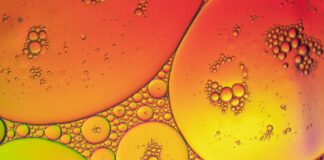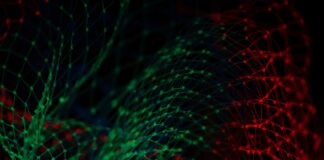Drone surveillance, a transformative advancement in the realm of aerial technology, represents a powerful tool for a wide range of applications, from security and law enforcement to agriculture, environmental monitoring, and disaster response. Drones, also known as Unmanned Aerial Vehicles (UAVs) or Unmanned Aircraft Systems (UAS), have revolutionized the way we collect, analyze, and use data from the skies. This technology has made it possible to capture high-resolution imagery, record videos, and gather critical data from vantage points that were previously difficult or impossible to access. In this comprehensive exploration, we delve into the intricate world of drone surveillance, its evolution, fundamental principles, key technologies, applications across industries, regulatory considerations, ethical implications, and the profound impact it has on aerial data collection, privacy, and the future of surveillance.
Drone Surveillance – Transforming Aerial Data Collection
The Evolution of Drone Surveillance
The concept of aerial surveillance is not new; it has been employed in various forms, including manned aircraft and satellites. However, drone surveillance represents a significant leap forward, making aerial data collection more accessible, cost-effective, and versatile. The evolution of drone surveillance can be understood through several key stages:
Early Drone Use (Mid-20th Century): Drones were initially developed for military reconnaissance and target practice during and after World War II. These early drones were often remote-controlled aircraft.
Commercial and Civilian Adoption (Late 20th Century): Drones began to find applications outside of the military, including agricultural and environmental monitoring, as well as search and rescue operations.
Advancements in Technology (2000s): The 21st century saw significant advancements in drone technology, with the development of consumer and prosumer drones that were affordable and capable of carrying various payloads, including high-quality cameras.
Regulatory Frameworks (2010s): Governments around the world began implementing regulatory frameworks to manage the increasing use of drones. These regulations address issues such as safety, privacy, and airspace management.
Key Principles of Drone Surveillance
Drone surveillance is guided by a set of fundamental principles that underpin its endeavors. These principles serve as the foundation for responsible and effective aerial data collection:
Data Collection: The primary purpose of drone surveillance is to collect data, which can include imagery, videos, environmental measurements, and more.
Remote Operation: Drones are operated remotely by a human operator, who controls the drone’s flight and payload remotely through radio signals or other communication methods.
Versatility: Drone surveillance is a versatile tool that can be applied to a wide range of applications, from disaster response and infrastructure inspection to wildlife conservation and filmmaking.
Data Security: Protecting the data collected by drones is of paramount importance, as it can include sensitive information. Encryption and secure data transmission are crucial.
Safety: Safety is a top priority in drone surveillance. Operators must adhere to safety guidelines and regulations to prevent accidents and protect people and property on the ground.
Ethical Use: The ethical use of drone surveillance is essential, encompassing issues such as privacy, consent, and responsible data handling.
Key Technologies in Drone Surveillance
Several cutting-edge technologies are instrumental in the operation and success of drone surveillance:
UAV Platforms: UAV platforms, or drones, come in various sizes and designs, each tailored to specific applications. Quadcopters, fixed-wing drones, and octocopters are just a few examples.
Remote Sensing Payloads: Drones are equipped with a variety of payloads, including high-resolution cameras, thermal imaging cameras, LiDAR sensors, multispectral sensors, and gas sensors, among others.
GPS and GNSS: Global Positioning System (GPS) and Global Navigation Satellite System (GNSS) technology is used to determine the precise location and altitude of drones.
Radio Control Systems: Radio control systems and communication links enable the operator to control the drone remotely.
Flight Control Software: Drones are equipped with flight control software that stabilizes the aircraft, adjusts flight parameters, and assists in navigation.
Data Processing and Analysis: Once data is collected, it is processed and analyzed using specialized software to extract meaningful insights.
Applications Across Industries
Drone surveillance has found applications across a wide range of industries, each benefiting from the unique perspective and data collection capabilities of drones:
Agriculture: Drones are used for crop monitoring, pest control, and precision agriculture. They provide farmers with essential data to optimize yields and resource use.
Environmental Monitoring: Drones aid in environmental monitoring by collecting data on deforestation, wildlife tracking, and the assessment of natural disasters.
Infrastructure Inspection: Drones are employed to inspect critical infrastructure such as bridges, power lines, and pipelines. They reduce the need for manual inspections and enhance safety.
Search and Rescue: Drones play a crucial role in search and rescue operations by providing aerial perspectives, identifying survivors, and delivering essential supplies to remote locations.
Security and Law Enforcement: Security agencies and law enforcement use drones for surveillance, event monitoring, and search operations, enhancing public safety and situational awareness.
Media and Entertainment: Drones have revolutionized the film and media industry, enabling filmmakers to capture stunning aerial shots and dynamic scenes.
Wildlife Conservation: Drones are used for wildlife tracking, anti-poaching efforts, and monitoring protected areas. They reduce the disturbance to wildlife compared to traditional methods.
Disaster Response: Drones are instrumental in disaster response efforts, providing real-time aerial views of disaster-affected areas and helping to coordinate rescue operations.
Challenges and Considerations
While drone surveillance offers numerous benefits, it is not without its challenges and considerations:
Regulatory Compliance: Navigating the complex web of drone regulations and obtaining necessary permits can be challenging, and non-compliance can result in legal issues.
Privacy Concerns: The use of drones for surveillance raises privacy concerns, as they can capture images and data that intrude on individuals’ private lives.
Security Risks: Drones can be vulnerable to hacking and misuse, which poses security risks. Unauthorized access to a drone’s data or control can have significant consequences.
Air Traffic Management: Integrating drones into airspace with manned aircraft requires careful coordination and management to ensure safety.
Environmental Impact: The environmental impact of drone manufacturing, operation, and disposal must be considered, especially as the number of drones in use increases.
Ethical Use: The ethical use of drone surveillance is a significant consideration, as it involves issues such as informed consent, responsible data handling, and transparency.
The Future of Drone Surveillance
The future of drone surveillance is marked by ongoing innovation and expansion, addressing current limitations and enhancing capabilities. Several key developments and trends are expected to shape the trajectory of drone surveillance:
Advanced Sensor Technology: The development of more advanced and specialized sensors, such as hyperspectral and synthetic aperture radar (SAR) sensors, will enhance data collection capabilities.
Autonomous Drones: Autonomous drones with advanced artificial intelligence (AI) will enable more automated data collection, reducing the need for constant operator intervention.
Urban Air Mobility: The use of drones for urban air mobility, including passenger transportation and delivery services, will become more prevalent.
5G Connectivity: The rollout of 5G networks will enhance data transfer rates and enable real-time data streaming from drones.
Regulatory Frameworks: Regulatory frameworks are expected to evolve to accommodate new drone technologies and applications while addressing privacy and safety concerns.
Environmental Sustainability: Efforts to make drone manufacturing and operation more environmentally sustainable will increase, including the use of electric and hydrogen-powered drones.
Integration with Other Technologies: Drones will be integrated with other technologies, such as AI, blockchain, and the Internet of Things (IoT), to enhance data analysis and security.
Public Awareness and Education: Public awareness and education on the responsible use of drones and privacy considerations will be crucial.
In conclusion, drone surveillance is a transformative technology with widespread applications across industries, providing a new perspective on data collection and analysis from the skies. While it offers significant benefits, it also raises important regulatory, privacy, and ethical considerations that must be addressed. As technology continues to advance, drone surveillance is poised to play an increasingly pivotal role in our society, impacting everything from agriculture and environmental protection to security and entertainment. The responsible and ethical use of drone surveillance will be essential as we navigate the evolving landscape of aerial data collection and the role it plays in our daily lives.














